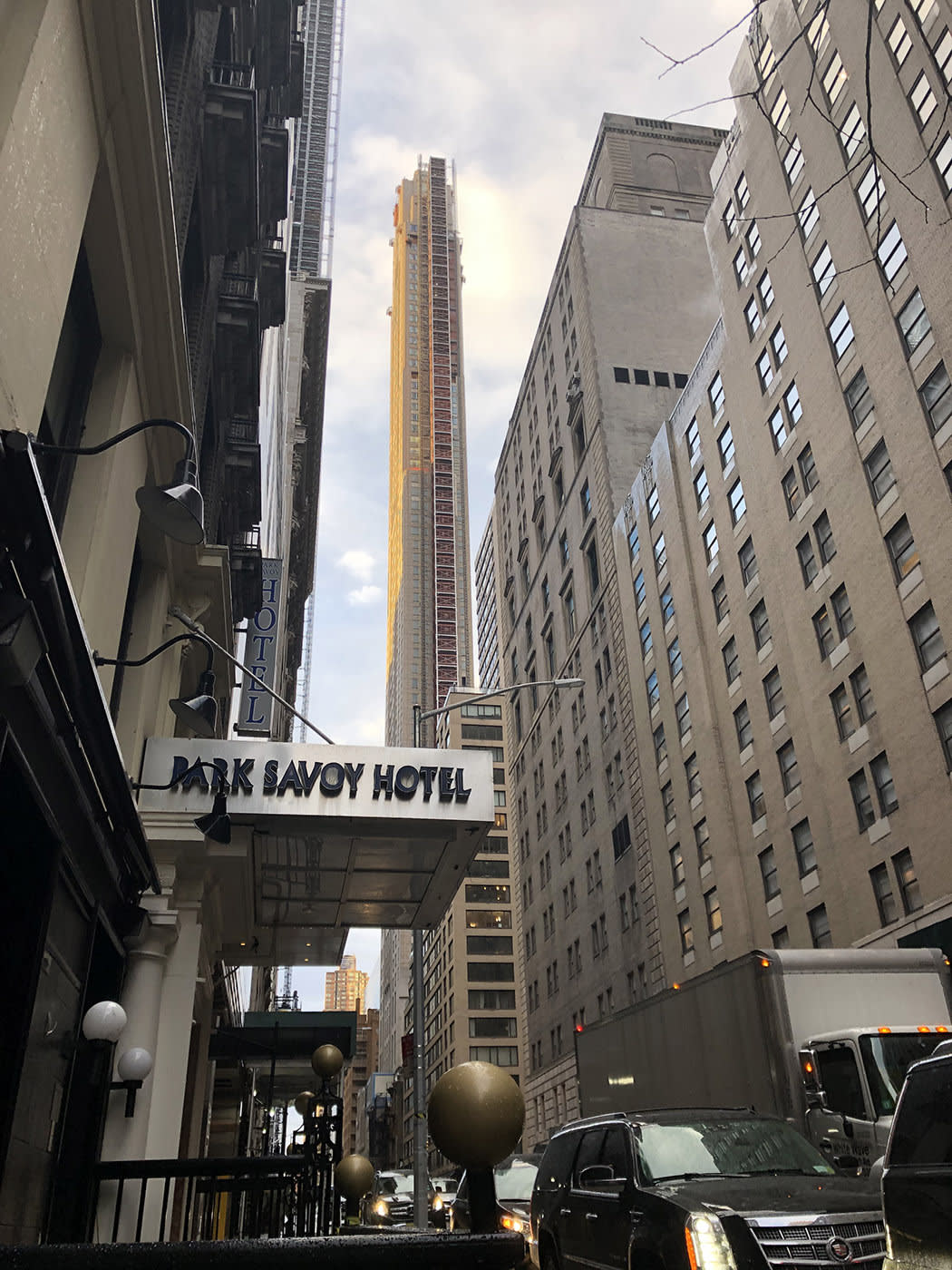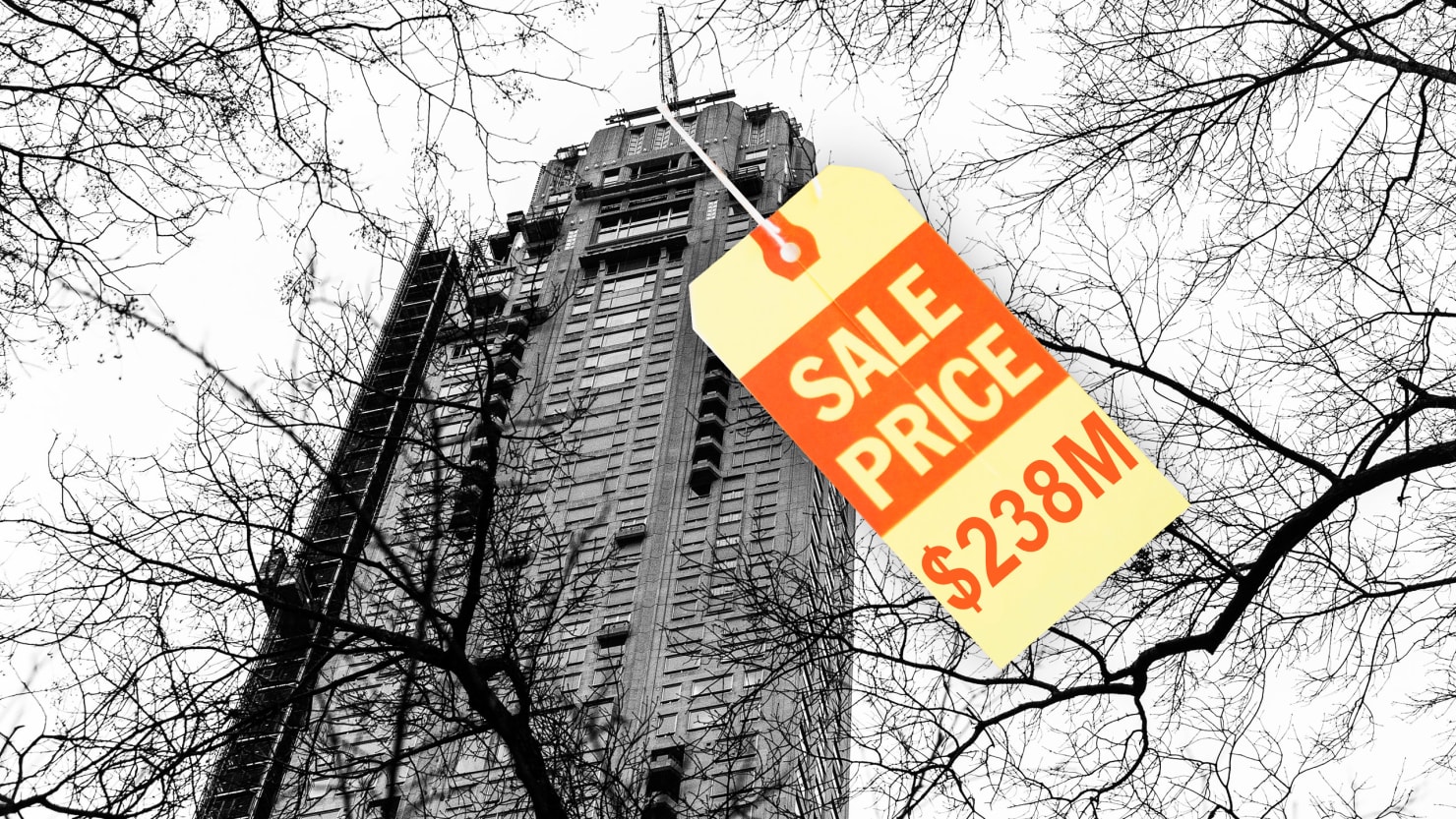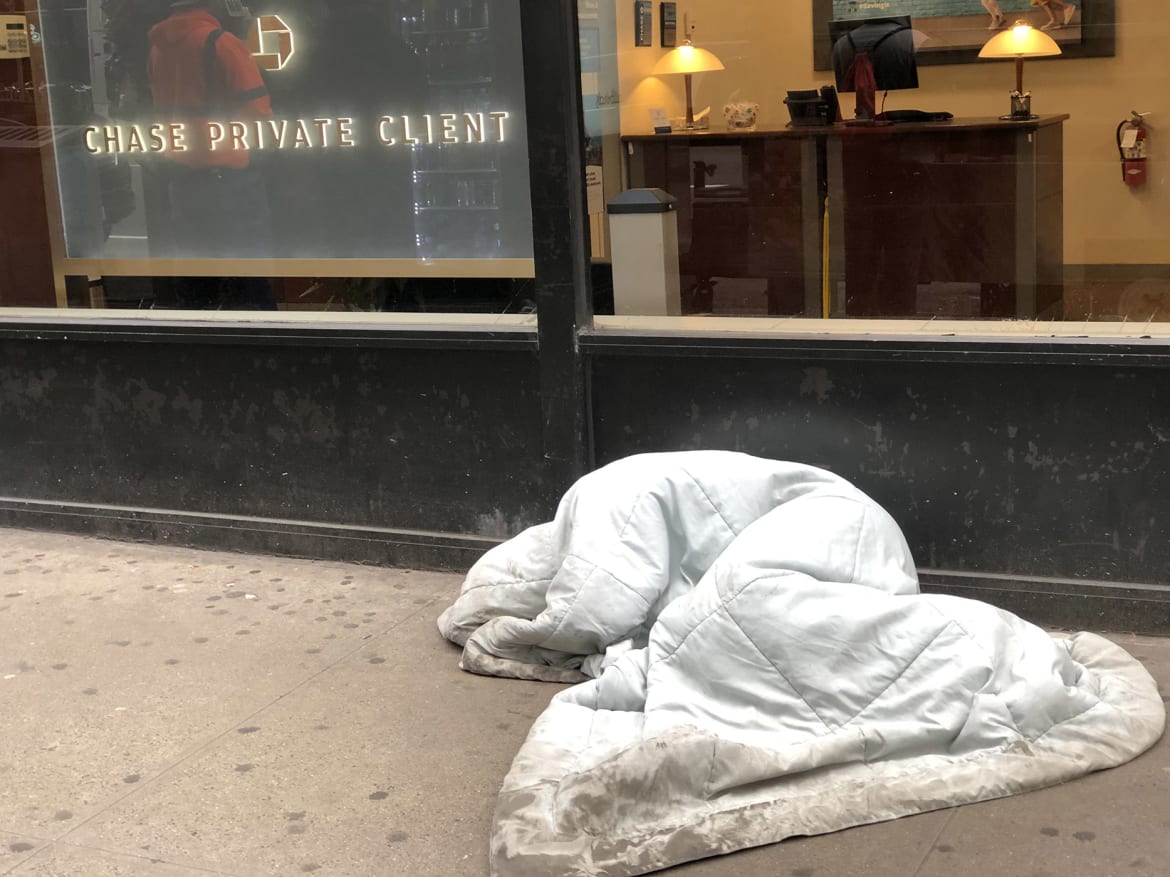‘Billionaire’s Bunker’ Sells for $238 Million as 140 Homeless Men Hope to Find Shelter on the Next Block
Daily Beast
TALE OF ONE CITY
The man who made New York America’s safest big city died before the building he called home was torn down to make way for a new addition to Manhattan’s Billionaires’ Row.
Photo Illustration by The Daily Beast
In a tale of one city, the hedge fund titan who just paid $238 million for the county’s most expensive private residence may find himself neighbors with 140 homeless men.
If the City of New York prevails in a legal fight to open a homeless shelter in a shuttered hotel amidst the ultra-tall, ultra-luxury new towers of Billionaires’ Row, Ken Griffin may set a record not just for home purchase price, but for economic disparity between people residing just a block from each other.
The gap takes on added social significance when you consider that Griffin’s quadruplex penthouse is atop a 69-story structure that was built by Trump pal Steven Roth and received prominent mention during our new president’s speech on election night.
Roth was standing in the crowd as Trump spoke to him from the stage:
“Steve’s building a big building on Central Park South, it’s a tremendous success,” Trump said. “I said, ‘Steve, congratulations on the building.’ He said, ‘Donald, it’s nothing compared to what’s happening with you.’ Is that right? My man!”
The site was previously occupied by a 20-story building owned by Sarah Korein, an actual master of the Art of the Deal who amassed truly huge holdings in Manhattan using skills she began to hone while growing up in Palestine. She was not yet 13 when she would secure wine from the British that she bartered for with the Turks for flour. She would then make baked goods that she sold back to the British.
Among the tenants in Korein’s building on Central Park South were NYPD Deputy Commissioner Jack Maple, who lived with his wife, NYPD Lt. Brigid O’Connor, in a rent-stabilized studio apartment overlooking Central Park as the strategies he devised and implemented began transforming New York into the safest big city in America, reducing murders from more than 2,000 a year to around 300.
One result of the historic drop in crime was a real estate boom such as even the brilliant Korein could not likely have foreseen at the time of her death from heart disease in 1998. Maple’s death from cancer in 2001 at least spared him from being forced out of the building along with his wife and the other tenants by the new owner, Roth.
Maple had so loved living on Central Park that when he was dying he asked a priest how Heaven could possibly offer anything better. The apartment joined the rest of the building in becoming a mound of rubble that was carted away to make room for Roth’s contribution to Billionaires’ Row.
Another result of the drop in crime was that New Yorkers felt safe enough to vote for a liberal such as Bill de Blasio for mayor. De Blasio fancies himself a progressive leader of national stature. His efforts to further that notion include a “Turning the Tide on Homelessness” program involving the opening of 90 new shelters. A progressive’s fantasy came true in 2017, when the owners of the Park Savoy Hotel in the middle of Billionaires’ Row made it known they were interested in leasing it as a homeless shelter.
In January of 2018, word of a planned shelter at 158 West 58th Street leaked out to the surrounding community, which reacted to the prospect of a homeless shelter in much the same way as had communities in Brooklyn and Queens. One difference was that the newly formed West 58th Street Coalition could not complain that the city was once again dumping its troubles on a poor or working-class neighborhood. And the folks from around Billionaires’ Row elicited considerably more intense scorn than do your usual Not In My Back Yard folks.
“You can’t blame people for being concerned about the safety of their family,” Suzanne Silverstein, head of the West 58th Street Coalition, told The Daily Beast. “But if you say something like that, you’re vilified, you’re a bad person… You’re made out to be a villain.”
Silverstein seems to be an entirely nice person and not at all what you would assume from Billionaires’ Row. That may be because she is not a billionaire, just someone who is more concerned about living alongside the homeless than she might be if she were not a mom. Her misfortune is to have neighbors who are billionaires of the most rapacious variety and it is hard for most of us not to see some poetry in the homeless living amongst them.

And the coalition certainly did not help its image among the tender-hearted when it retained Randy Mastro, formerly chief of staff to Mayor Giuliani, who had acted as if banishing a dozen squeegee men from the streets was a victory for civilization itself. Mastro had gone on to serve as deputy mayor of operations.
Now in private practice and representing the coalition, Mastro contended that housing the homeless at the Park Savoy would cost the city $47,000 annually per bed. He described it to the New York Post as “an astronomical sum that dwarfs what’s been spent for such housing elsewhere.”
“It’s not only intolerable, it’s illegal,” Mastro declared, sounding very much like his former boss.
A spokesman for the Department of Homeless Services countered that the citywide average is $54,000 annually per bed. That, if true, would mean Billionaires’ Row is a relative bargain when it comes to sheltering the homeless.
Plans for the shelter seemed sure to go ahead and the city installed a metal detector by the entrance in anticipation of the opening. The coalition then filed a petition in state supreme court seeking a preliminary injunction, contending in part that the Park Savoy has serious violations of the fire code. The petition asserts that, among other things, the proposed shelter is a “fire trap.”
“Lives are literally at stake,” Mastro said in court papers, as if one of the suit’s prime concerns was the well-being of the shelter’s residents.
The coalition backed up its argument with affidavits from a retired FDNY captain and a former city Buildings Department official who also served as a deputy commissioner with the Department of Homeless Services. Another former DHS deputy commissioner also weighed in. All of them contended the building would be unsafe as a homeless shelter, noting that, among other things it has a single egress via a narrow, winding staircase.
The city countered with experts of its own, saying that the buildings had sprinklers placed so as to make the single egress permissible. The city reported that the building met the fire code back in 1942, when it was issued a certificate of occupancy. The city had in recent months taken out a new, temporary certificate of occupancy deeming the first four floors are safe for 45 residents while the upper six floors are renovated to house the remaining 95.
In December, Manhattan Supreme Court Judge Alexander Tisch denied the petition, finding that “While safety issues constitute an important concern, the shelter has been issued a temporary certificate of occupancy and is presumably safe to open.”
Tisch quoted the city’s contention in court papers that the “Petitioners’ mere distaste for the presence of homeless men in their neighborhood does not constitute legally recognizable harm.”
Tisch himself then noted, “With the increasing demand to provide shelter and the upcoming colder weather, the City respondents should be able to move forward with opening the shelter.”
The coalition went to the Appellate Division. First Department Appellate Judge Jeffrey Oing granted a temporary stay, pending a review by an entire panel of his fellow justices. The papers before them include an affidavit in which Silverstein attests that she found a more suitable building just four blocks crosstown on West 57th Street. The judges are likely to understand that those long blocks extend to a whole other neighborhood, into someone else’s backyard.
The decision is expected any day.
Meanwhile, Sunday night saw the temperature swiftly drop some 50 degrees, to near zero. The temperature was back up on Wednesday, but the next morning brought drenching rains that continued through the day.
Michael Daly/The Daily Beast
“Sorry, we’re CLOSED,” read a sign in the door to the Park Savoy Hotel through it all.
Just beyond the door stood the metal detector. Two workers were in the lobby by the front desk on Thursday afternoon, but they were quick to say, “We’re not open!” They soon after departed, stringing a steel chain across the door, secured with a padlock.
In the late afternoon, the rain ceased, and the sun broke through so that it shone golden on the upper floors of 220 Central Park South and the $238 million penthouse that has been dubbed “the Billionaire’s Bunker.”
At least Griffin is not as reprehensible as many of the billionaires who will be his new neighbors. He is an active philanthropist and a big contributor to the Robin Hood Foundation, which works to secure permanent housing for New York’s homeless.
Earlier in the day, Maple’s widow had been discussing on the phone the big sale atop the building that had risen from the rubble of the one where she and New York’s savior — her husband — had lived.
“I would never have left,” she said.
Of what Griffin paid to be able to gaze from splendor out at Central Park and maybe go for a stroll or a run, she said, “I won’t say it’s not worth it. It’s probably worth every penny.”
Now the first and last sunshine of an otherwise unrelentingly grey day was gleaming off the new tower on the spot Maple thought must outdo whatever heaven had to offer.
Down below, a sodden homeless man was slumped on the sidewalk under a store awning, sleeping and hopefully dreaming of other circumstances. To have awaken him to his present lot would have seemed unconscionably cruel.
Unless you were able to direct him to a shelter just around the corner.










Follow Us!